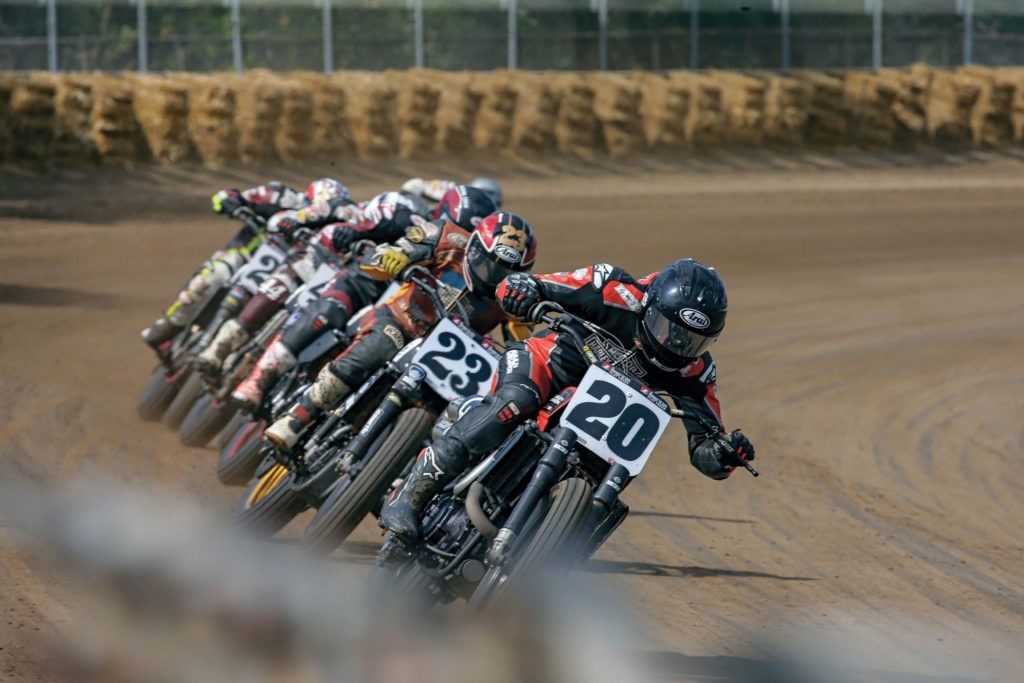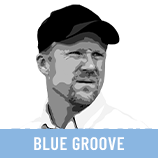This decade of Springfield Miles ends with the 101st and 102nd running of what is arguably the best and most competitive motorsports event of any kind, anywhere, year after year.
All mile-long dirt racetracks around the country are different. Most were originally designed with horses in mind, either thoroughbreds – as at Churchill Downs in Kentucky – or trotter horses (harness racing) at, say, the Meadowlands in New Jersey. Some mile tracks, like the one in Springfield, Illinois, have hosted autos and motorcycles since their beginnings. You can tell the difference by what defines the inside (Armco barriers) and outside (a mixture of Armco and/or concrete walls) walls.
The Illinois State Fairgrounds in Springfield, IL is used primarily for harness racing during the State Fair and is a year-round training facility for said horses. Harness tracks are typically clay-based with fine rock (pea gravel) mixed in at the surface so the base remains firm yet allows for the top layer to be scratched and forgiving for the horses pulling buggies.
The mile-long Springfield track is also symmetrical, in that each corner and straight are a quarter-mile each in length. Combine that with a smooth and well-prepared black gumbo clay base racing surface that’s 80 feet wide everywhere, and your recipe for close racing at high rates of speed is complete.
This recipe also produces the easiest racetrack for AFT racers to go fast on. More racers have recorded 100 mph average lap times at Springfield than any other track they have visited in the country. Of course, the ease in which most racers can go this fast makes winning Springfield much more difficult.

The constant triple-digit speeds attained at Springfield, coupled with the historically anti-aerodynamic nature of flat track motorcycles via the technical regulations in flat track racing, create large pockets (by motorcycle racing standards) of air for racers to use to draft each other. Talented riders on slower motorcycles can use the draft from faster bikes to pull them around the track as much as a half-second a lap faster than running by themselves. Good riders on great-running motorcycles often find it difficult to create the sort of separation (breaking the draft) you see at other tracks AFT visits.
Springfield first hosted motorcycle racing in 1937. That first race was won by Indian-mounted Lester Hillbish of Reading, PA. From that year until 1953, when Bill Tuman (also Indian-mounted) of Rockford, IL was the winner, winning the Springfield Mile meant you were the National Champion.
Starting in 1954, the AMA developed a “Grand National Championship,” with the Springfield Mile as one of 17 races. Riders scored points at each event, and, like today, the rider with the most points at the end of the season earned the Grand National Championship.
The first Grand National at Springfield was held in 1954 and was won by Joe Leonard of San Jose, CA. Leonard would go on earn six additional victories that year, and win the first Grand National Championship in a landslide over Paul Goldsmith of St. Clair Shores, MI. Leonard would go on to win Springfield twice more (’57 and ’58) before embarking on a successful Indy Car career.
From 1967 to 1981 the Springfield Mile was put on a hiatus of sorts by local and state government. It took 15 years and a bit of political wrangling to convince local powers that professional flat track motorcycle racing in Springfield would have a “positive financial impact” on the city and outweigh the “negative safety to the public” that shut it down before.
Indeed, the Springfield Mile has been a staple on the flat track racing schedule for last 38 years. Run every Memorial and Labor Day weekends, it has been described as motorcycling’s Daytona and/or Indy 500. Since its return to the schedule in 1982 and through 2010, 21 out of 28 Grand National Champions won at Springfield in their championship-winning years.
Champions have feasted at Springfield during their Championship years, winning at least one of the two races held each year. Former factory Honda riders Ricky Graham (champ in ’82, ’84 and ’93 Champ) and Bubba Shobert (’85, ’86 and ’87) each won at least one Springfield Mile during their championship seasons.
The rider that took maximum advantage of his mile-racing skillset, however, was Scott Parker, who won an astonishing 14 Springfield Miles during his career. Of his record nine Grand National titles, Parker won at Springfield in eight of them (’88-’91, ’94, ’95, ’97, ’98). Interestingly, the last 10 years have seen fewer champions winning Springfield in their Championship seasons. This is due in part to the diminishing number of Mile races being held during the decade. Winning a championship in this new era requires more all-around flat track skill than in the mid ’80s and ’90s, when Mile tracks made up more than 50% of the series’ events.
From a personal perspective, I have raced in half (or 51) of the 102 Springfield Miles. The above-mentioned riders and their victories were at the expense of each other and me. While I would go on to record 12 wins at Springfield in my career, they would not have been possible without the lessons learned in defeat by their hands. Those lessons include leading off turn 4, lap after lap, and to the line first, lap after lap, only to get nipped at the stripe on lap 25 when it counted most. Or, following somebody off turn 4, lap after lap, and beating them to the line, lap after lap, only to come up short on lap 25 when it counted most.
Every rider in the lead group must determine what is real, and what isn’t, against any rider they lead or follow off of every turn for 25 grueling laps in the hope they have positioned themselves perfectly for the run to the checkered flag. The more riders in the mix, the more variables to calculate.
Due to a rainout over Memorial Day weekend, both 2019 Springfield Miles were held over Labor Day weekend. Going in, Indian’s Briar Bauman held a 38-point lead over defending champ and teammate Jared Mees, with Bauman a Mile victory away from scoring a career and season Grand Slam – winning a Short Track, TT, Half Mile, and Mile.
Springfield would be pivotal for either rider’s championship hopes. Mees would need his experiences from both defeat and victory at Springfield to take a bite out of Bauman’s points lead. Bauman, with only eight starts and a career-best fourth at Springfield, would have to stay near the front to maintain his grip on his first-ever Grand National Championship.
For the rundown on what happened during both 2019 Springfield Mile races, as well as the action from the always-exciting Williams Grove Half-Mile a week later, check out our American Flat Track feature story on page 18.
Talk to ya next month.
If you also suffer from a flat
track addiction, reach out to Chris
for tips on chasing the dragon at
bluegroove@thunderpress.net




















[…] mentioned earlier in this issue (Blue Groove, page 6) that the dual Springfield Miles on Aug 30 and September 1 would be pivotal to both Jared Mees’ […]
[…] mentioned earlier in this issue (Blue Groove, page 6) that the dual Springfield Miles on Aug 30 and September 1 would be pivotal to both Jared Mees’ […]